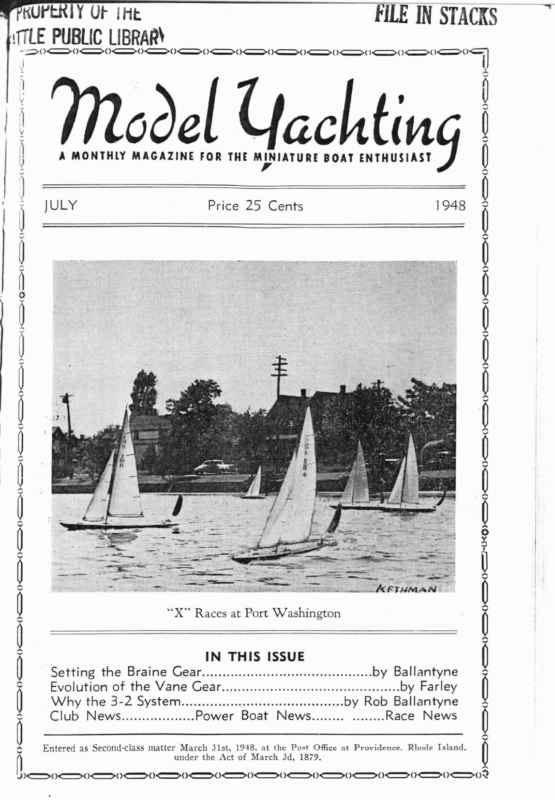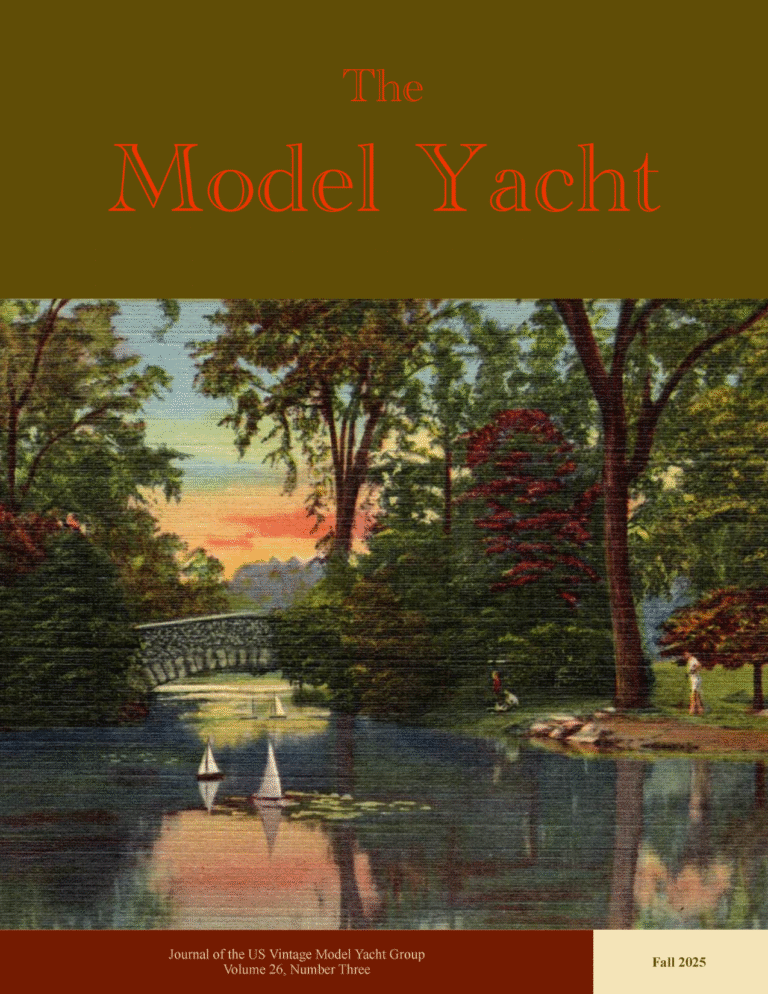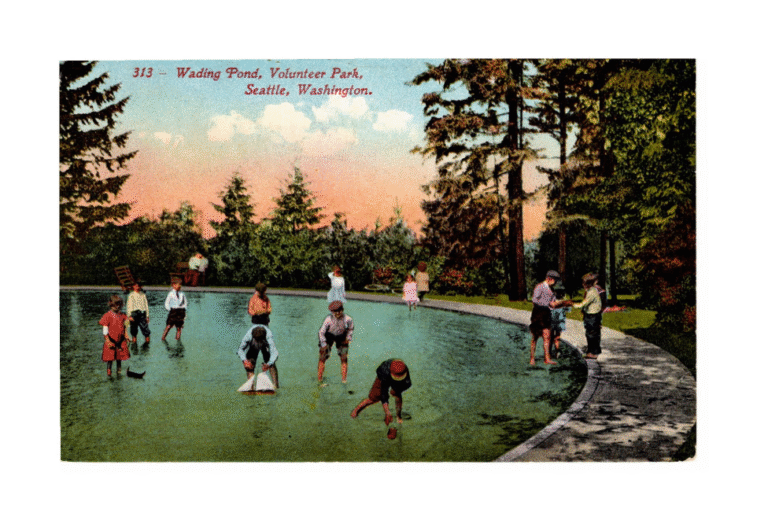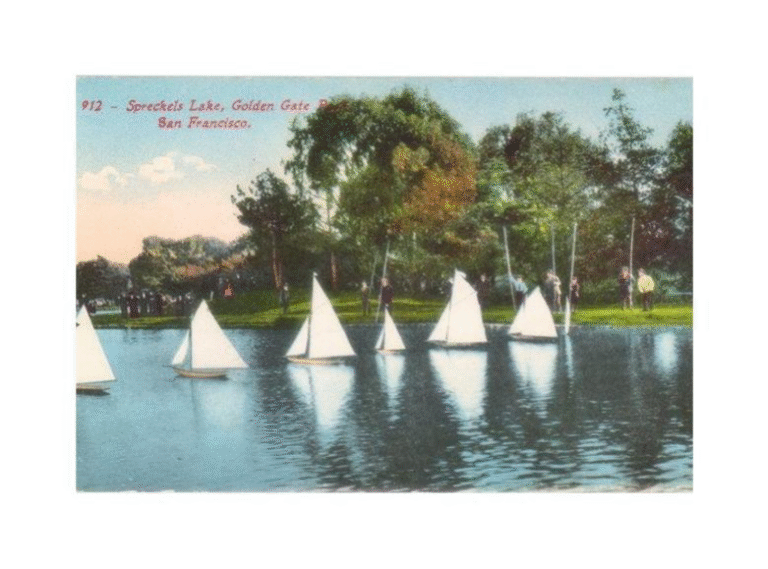- Featured Topics – X-Class Races at Port Washington – thrilling competition with top skippers battling for honors.
- Tech Corner – Setting the Braine Gear – tips for perfect trim and steering.
- Evolution of the Vane Gear – design insights from Charles Farley.
- Race News: Eastern Division “X” Pond Championship
- Santos Trophy
- Community Buzz: Collier’s feature sparks nationwide interest
- Florida youth programs launching model yacht workshops – the sport is growing!

KUt’ I Y Of-f Ht FlLEINSTACKS 1TTLE PUBLIC LIBRAR\ i;:;:>()C=>()C=>()C=>()C=>()C=>()C=>()C=>()C=>()C=>C>C=>(l<==)()<==)()~(), ~ ) ~ ~ ~ J ========= ~ JULY ~ ~ Price 25 Cents 1948 ~ ~ ,~NWWViWi 1 ll!IJllll111i! 1111\l\llllll\!i!!llllll11111111l\lll11 11i\11il~ll11111!1III ~l!.iii!. 1I!.i;~ 11il I!!ill lli1i~!ill!.!l~i!ili1l1!l ~ 1 1 1 11 1 ~ 1 1 ::1::::;::1:::ii: :1::t ij ~ ~ ~ 1 ''''"''" ,,, -- ~ ~ ~'t:lkl\tkt••Ittt .::::~;~:;l1!1l!l1!i!i~ -~ ~ ~ ~ ~ ~ ~ i;tllt~t,l!JJ~ YM#0fb%& ·~ ~ FNlrnrn ~ MJJfffilli@llfilftijj lI# 1}%11#'!:,Z:Z<==:>C><:::::><><:::::>C><:::::>C)~()~()<:::::><><:::::>C><:::::><><:::::><><:::::><><:::::><><==><><==><>~ ~ ~ ~~ ~ ~ (I U
MAIN OFFICE 71 C.c1Ila Street, Providence 5, R. I. EDITORIAL STAFF J. Freeman Publisher-Editor Santos, Miss Jeanne A. Santos, Ains Ballantyne Leslie Gesback Associate Editor ON THE SICK LIST Technical Editor Word comes to us that the “wizard of Wilmington” our scientific minded Gus Lassall has been confined in the Long Beach Hospital for some time. Comma, dore Tucker of the San Diego Club is at the Naval Hospital for observation and diagnosis. To both, our sincere hopes for a speedy recovery: Fred Fulton of L. I. club fell at his work an, a long boom is used, a large rudder and large feather is best. SIZE AND SHAPE OF SKEC Mr. Fiske writes: “The size and shape of the skeg will vary according to the type of steering used. A long, shallow skeg should be used with Braine gear, and a deep.skeg to match a deep rudder is best for vane gear steering. The lead, ing edge of the skeg should slope for, ward at an angle of not less than 45′ d”‘ grees. Incid~ntally, the more lateral plarie placed in the skeg, the less needed in th,,, fin. One square inch in the skeg is worth about nineteen in the fin for holding the C.L.R. aft”. Mr. Ballantyne is of r1. d;f ferent opinion, and he says: “It is doubt, ful that a large skeg acts to move th, C.L.R. aft in actual practice. According to smoke tests on planes, the stabilizer is not figured in the lift of the plan • because return currents from the JYP j-, wing act on the reverse side, and I thin 1, something of this kind works in model 8 boats. Also, a large rudder and skeg causes a quarter wave”. Quoting Mr. Lassel on the subject: “What really counts is the area of the skeg and rudder, multiplied by the distance from fulcrum; the moment, in othe: words. Halsey’s autobigraphy says that doughty pilot “F.D.R. “, in taking a des, troyer through a channel, faced aft to watch the stern swing around the fol, Spowart’s Self,tac~ing Vane chum, which at that particular seeed ·was at the bridge, 2 /3 of the LWL ahead of the transom. The C.L.P. had moved from a static place somewhere amid, ships to a position 36% of L.W.L. ahead, the dynamic one at that particular speed. Consideration is due that characteris, tic, also the fact that the skeg and rud, der operated in water already in motion, and that laminar flow varies in thick, ness with the amount ~:>f disturbance pre, viously imparted. A plate fin disturbJ only a thin lamina, and the water comes clean to the rudder. Under this ideal condition, the area of the skeg and rudder follows the rule of a simple first-de, gree equation. Some writers say that a ‘I I
rll’eskeg and large rudder cause a q~ar, tc·r-wave. I have a boat with medium size -keg and rudder. The skeg, strictly B-29 1:; rather thick at the entry, and this is the only boat of mine that put on th•~ ,henomenon of a quarter-wave, and it 1 i:; only a pencil-line ripple.” ; 1 The author notes that h~ has observed .ill sorts of quarter waves, on full-keel, l·rs, fin,and-skeg, and isolated skeg types, .1nd confesses that he does not know the reason. He has discovered that a great Jcal of theory, expounded in various tcchinical writings, seldom seems to help make a model sailing craft faster! SHAPE OF VANE FEATHER Most feathers now in use are about three times as high as they .are wide. The feather is always “streamlined” or tapered from about one-eighth to about· 1, 16th of an inch in a fore-and-,aft I direction, and the corners are quite rounded. Mr. ……. ;:=:· … …,]:C=.· …… A-Class Yacht with Ballantyne Vane Feather and Permanent Bac~stay Details Ballantyne, a leading exponent of the vane gear, prefers adifferent propor, tion. He writes: The reason for the shape of my feather is that a nine to one proportion has been found the most efficient theoretical shape for an airplane wing, so the feather is made 18×2 inches for A-Class, and 16xl and 3/4 for M,Class. It is bent toward the pintle at the bottom to reduce the size and weight of the wire supports.” AREA OF FEATHER, RUDDER, SKEC The following figures were arrived at by taking measurements from several successful yachts, and striking an aver, age. It has been stated that the area of the vane feather should be about 3. 5 times that of the rudder area, but in practic’! the area of the feather is about four times that of the rudder. The following tables take into consideration the round, ed corners of feathers and rudders, hence total are~s are somewhat smaller than if the shape were rectangular. Approximate Depth of Rudder A-Class 14×4.5 in. = about 56 sq. tn. X-Class l 3×4.0 in. = about 46 sq. in. M-Class 12×4.0 in.·= about 42 sq. in . These dimensions were taken from “usual” shaped feathers, not the tall, narrow Ballantyne type, which latter, seems to have a much smaller total area. Approximate Area of Rudder A-Class 12 to 15 sq. in. X-Class 10 to 12 sq. in. M,Class 9 to 10 sq. in. Approximate De pth of Rudder 5.5 to ·6.0 in. 5.0 to 6.0 in. 4 ..o to 5 .0 in. Some super-skippers are reported to carry three or fou,_-different sized fea, thers, each for a different wind-strength. Most skippers carry only one and stick to it for all conditions, and· seem to thrive. Local conditions have much to do with just what areas of feather, rudder and skeg are best. Some clubs sail on ponds where high velocity winds are a matter of every day occurrence, while others have varied light and moderate winds, others have practically no wind at all most of the time. 9
AREA OF SK£GS Both the conventional type and the newer isolated type vary greatly. Some designers favor a skeg smaller than the rudder, others use equal area for both rudder and skeg, still others put 3 or 4 times as much area in the skeg as in the rudder. It would be well for beginners to stick to the mean – averages given above for feather and rudder areas, and use a moderate-sized skeg, not more than twice the area of the rudder. Continued in August Issue about the races there during 2’eptember 4, 5 and 6. We predict that San Diego will have the largest entries on those dates, of any club in the country, possibly exempting the Annual shindig at So. Jersey that ought to be a humdinger this year. SAN FRANCISCO CLUB The Dickey ,Elimination Riace for Class X yachts was sailed on May 9 in a light 8 to 10 knot westerly breeze and brought out only a small field of 6 con______ IIODIL YACHTIN…_ ____ _ testants. This race is an annual club event to provide a challenger for th~ SANTOS MEMORIAL TROPHY This trophy was presented to the Dickey Perpetual Cup, which has been Rhode Island Club three years ago by held by Paul Collet several years past, our Assistant Editor, Miss Jeanne A. who must now defend his right to th~ Santos, in fulfillment of a promise “if Cup within the next 30 days against the daddy is with us at our next Am1ual challenger: R. S. MacKay’s fast No. 47, Banquet.” He was, and the promise which was sailed in his absence by was made good hv the presentation of Richard Hull. Rr; Jlts of Elimination a beautiful 30 inch high gold-bronze ped, Race as f~llows: Skipper Score estal, surmounted by a rer lica of a model Boat No. 47 Mackay 22 points yacht. 21 points This year permission was granted to No. 40 Pearsall· No. 17 Hammond 18 point3 place it in competition and all clubs are 17 points invited to participate in this regatta. It No. 6 Tofte , 15 points is expected that Eastern ~clubs will visit No. 24 • Gallagher No. 29 Schmidt 12 points Providence and bring their families where The fast motor speedboat Vagabond 2, they can wander thru the loveliest park owned by Heine Frre, which has been this side of the Mississippi. Lunch and refreshments will be serv> clocked as high as 62 miles per hou::-, ed at the park where the races will be will be taken down_Los Angeles way to participate in a power boat event to be held. The club would appreciate know, ing how many will attend, and accomo, held in. that area. The Power Boat Section of the S.F.M., dations will be reserved. The date is Y.C. held its Spring Regatta at Spreck, September 2 5′-26. Look for the club advertisement in the els Lake on May 16. This event brought August issue. out a representative fleet of speed boats and prototypes, which were put through their paces before an admiring audience SAN DIEGO GOES T OTOWN of several hundred spectators. Power As· was to be expected, with our Col. boat demonstrations always seem to atTom Allen at the helm, the San Diego tract larger crowds than are found at club is destined to become the model the sailing events; probably people are yachting center of the good old U. S. A. more mechanically minded in these days. Notice the business methods he uses In the speed boat group. some fast to get the skippers all hot and bothered Continued on Page 14 10 I •l
…………………………………………… ~~ READER’S FORUM • • • • • • + + • • • • • • • + + + • • • • + • +• • • +• • • • • • • • • • • • • ♦ • + + + + ♦ + • • + • • ., ·1· .• by Robert H. Ballantyne Bill Pond was once a sailor bold, He braved the oceans Two plus Three 13utnow he’s anchored by the- tail To One plus One at Bonus Quay. BUSY r,:OT/~6- SAILIN6 r~~· ~ ‘ ~ ,,, – .. It’s a big tail but it is half told. Ther~ I I are 25 clubs in the M.Y.R.A.A. 12. dub~ did not vote on the new scoring system. 10 clubs voted for it, 2 clubs voted against it. 1 club voted for an alternate system. 15 of 25 clu.bs did not vote in favour of ·it. This a~ticle is an answer to those who want to know why Mr. Pigeon in, sists that the 3-2 system is the only proper way to score races and is written as an explanati,on of how the •3-2 point system came into being, also to show that there are actually no extra points given to boats sailing on the wind. The points are awarded strictly on the distance sailed in a complete board. (2 legs-I to windward and 1 to leeward). Before proceesfing to prove this, I should like to discuss the statement Mr. ]. Wood made in May, M.Y.M. that the majority clubs of the M.Y.R.A. settled the scoring issue for one year. This state, ment is ambiguous. If he meant that there are majority clubs I don’t under.stand it. The fact has already been given , above that a i;ni~ority of the clubs actually passed the new s~oring system. I happen to know that Boston voted against the 1 plus 1 system but their vote was not recorded due to the absence of their secretary. In aa important matter like this I think it might be advisable to establish a quorum system in which two, thirds of the clubs must vote for major alterations in order to prevent capricious changes by men unacquainted witn the •requirements of pond sailing, also to give pause to pond politicians. Now for the explanation of the 3, 2 scoring system. One board equals two legs, one on and one off the wind. The .scoring system is figured on boards, that’ is to say scores are ba.sed .:on a completed board not on individual legs and, qn~e. more, up and down the pond is one bo’ard. . ‘ ·’ Now, because you ~an ‘t have boats on the pond sailing b0th,; ~~y..s at once in important,, competitib°Q,· and. becaus.: points are’_based on i defeating ..an opponent there and back, the·distance,-must be divided into two parts. This brings up the vital question of ho:w to split the board points between the two legs. The fairest way is obviously to split the points in proportion to the distance actually sailed in a board there and ‘back. To make it easier to see what happens the diagram below shows a pond 1700 feet long and 850 feet wide. That is to say that two squares. The ideal •distance to windward actually sailed is 2400 feet and 1700 feet off the wind, making a total distance sailed, up and down, of 4100 feet. ( As shown in the diagram) ( A 4 5° angle made good on the wind is accepted by naval architects as ideal performance. Regardless of the shape and 11 I;
size of the pond, the 3-2 ratio on and off the wind is always the same but it would take too many diagrams to prove it.) Windward leg A to B to C = 2400 feet Leeward leg O to M = 1700 feet Sailed in one board = 4100 feet The points are now to be awarded on the distance sailed 4100 feet. The division of 4100 feet can only be based on the proportion sailed in each leg, that COMPAR.ISON SCOR.E3-2 SYSTEM WtNOWAlllO U.EWARO 2 1SAILED 35Allll!0 2 POINT$ fARNEO SCORE l+I SYSTEM ?jsAtUO 1 1 POINT POINT IARNID +2 POINTS euNeD ven”-AHS BONUS fl09’PINIIHING K RUN C .. w o• 0 l Wl ….0 t f i I –0 . ~: ~ rt 0 … 0 ., “‘I I I I I I I I I I AV _ l \ I I I I I I \ IL I I \ I •; r rl o ol g ~I \ \ ., t -e. I I I I 1 MS -· -·, I I I I I I I MS 850’~ I is, 2400 to 1700, more simply, 24 to 17. If 5′ points are taken for the complete board ( 4100 feet). Variations in the wind (The usual thing) increase the distance very much on the wind compared to off the wind as shown in the dotted liQ.eson the diagram. In this case, the new distance on the wind, becomes 2810 feet. As against the previous (ideal) distance, 2400 feet. Increase 410 feet. Off the wind the ne\V distance 1s, 1780 feet, as against 1700 12 feet. Increase, 80 feet. The proportion now becomes 3.06 t 1.94 = 5’.00. It is now evident that the average rati 3 to 2 solves the problem in the easie~ way. Under the 3-2 system, when there 1 no true beat to windward and the di~ tance there and back becomes more equai The O.D. is allowed to award two point each way in recognition of this fact, an1 also beca Jse the total distance is shorten ed. This shows that in the 3-2 system there is no extra point given purely fo windward sailing. Points are alloted en tirely on the distance sailed. This explain. why the 3-2 system is not antiquated a, stated by Mr. J. Wood in the May issue. unless mathematics and intelligences arc. also quoted. With regard to the statement of Com. S. R. Dickie that we have never heard the nonsensical pronouncement that windward legs shov ld be rated higher that leeward ones, I think the previous statement of the rule shows that distances and not directions are rated. I might have answered him by quoting Nat Herreshoff as having said that a hay stack can blow off the wind but it takes a welldesigned yacht to go on the wind; the better answer is that big yacht and skiff sailors do not sail thejr boats in separate legs as pond sailors do. They sail there and back which is obviously impractical on a pond. His offer of a humble apology does him credit but we will spare him this indignity because he obviously labored under a misunderstanding as to the nature of the 3-2 rule. •Further more it is unwise to penalize the boats on the windward leg by making them sail further for the same amount of points because it •is precisely thos~ boats that go best _to windward which promite t,he great.est advancement in de- sign. Off the wind,- Questions of stability, seaworthiness, and balance are of , minor importance, whereas on the wind ~
.. rhrcc and particularly perfect balance .. 1,::c be combined. Off the· wind· faulty -, 1,,n is indeed sometimes an asset. Giv, :;;~fair credit for points sailed on the ..,. 111cJ will also encourage skippers to try ttl cake the shortest course up the pond ,111J facilitate getting the races over as ,nnn as possible because it is the long ~,-indward leg that creates the most de, lhlrd 1: Picture an important race. On the windward end-of the pond are rliws of skippers and spectators,·. some . ,::noring, some weeping, some cursing. their teeth out, and above them all a frantic O.D. with a megaphone. At the lee end of the pond the Women’s Auxili, ary has)unch waiting. Half way down the p~n~ is Clarance, goodhearted but deaf, •.patiently rebuilding his boat to wi11his one point bonus. Board 2 : Same Board 3 : Sarne, Ethelbert too Board 4: Etc., etc., etc. Hell! how about· i~e,boating. News note, 1949-· M.Y.R.A.A. ·An, nual convention: The Demlicans after a secret meeting, wiped the Replocrats clean off the slate by giving a· four point bonus instead of the Measles one •point offered last year. • •. FLASH: Eastern Z dass championship for 1948 results just in, unable to ·nnish tie sailoffs-championship goes to· Jim Hiesterkamp, Charles Fulton; Fred Dick, ie, S. R. Pigeon, the Levy boys, Bilf Link, Al Bithel, and a few others.: Clarence,. the bonus ~1d, tied Ethelbert for second and last. • “They say I’m a rotten skipper The fact, I’ll admit, is true; • ·But though in the race I gained the last place, ‘ I’ve had just as much fun as you:” ‘.,• Inspiration has value. It’s· w~rth a good deal, but it costs so·mething: • HERE’S ANOTHER VERSION Dear Santos: As some of your readers, particularly the newer members of M: Y. Club3, seem to wonder why there should be more points ·for a ·windward race than a leward I feel that I would like to put in my two bits worth. I started sailing models in England, practically as a child at the age of 10. When I was about 17 I joined the Wir, ral M. Y. C. which was a member club of the North’e·r’1 M. Y. Assn. These clubs ~ ‘ were in the:vicinity of Liverpool. Prior to 1907 all races were sailed to windward only, and boats were towed back along the shore to the starting pla~e. Most of •the boats at that “t:ime·were of the old linear rater rule, though the Liver, pool M. Y. C. sailed boats of the old 1730 tonnage rule. See Daniels Book. Our club adopted the meter rule ·as soon as it was first talked of ( 1907), that is a year before it became effective for large yachts (1908). About that time our club started sail, ing “London style,” that is to say, a beat and a run. All we had to steer by was a double ended tiller and rubber tension cords. But that was the start of the 3 and 2 rule for scoring. Prior to the change it was generall v considered that the boat which could beat to windward ‘closer and faster was the best boat. This is -an accepted fact today with large yachts, just as it was years ago with fishing boats and clipper sh~ps, where the first boat. in got the best price for thefr.fish or teci:v1Now I must admit·· th~ vane ha~ more br le~fe~ened up··th~ adva.nt~ge· ·some °good ~indwafd ·boats had· over··others. This waswelf’proven ‘ when John 1;3lackand (I believe) \\:illiam •• • b ···· 9″ 6 Bithell werit to Frisco a out. 1 3 or so, and: -~ere badly trimmed ‘by-~ _1_ 2 r_e~rold boat with a vane. I note that Fred Pige·on ·a:nd George Ste.iiibrecher are for the old rule, and surely t~ese are model Yachtsmen who know _what ‘they are 13
talking about. Then there is Joe Patey, who says he is an old seadog or something, and don’t forget that I am also a yachtsman since my old days sailing out of Liverpool. so much for the relativ•~ value of the points for windward and leward. Now for a word on the idea of giving 1 point for starting, or, as I call it, for losing. At any rate, it is not for winning. Can you tell me any other sport which has a similar rule? I defy you!!! Of course you could start the typical American method of substitution. For example, j(,hn Black sailed for Otto B. U pyonda in the 6th heat. But perhaps I should not get so sarcastic when what we need is something to encourage the: novice or constant loser. I can •think of •three methods which could be tried, and some I have men, tioned before. • 1st. A handicap system on the boat’s previous record. .If a boat has made 80% her handicap would be plus 20% of her actual 8core. Perhaps this should be the possible score. 2nd. Special races for non-winners. But frankly, I don’t like this myself. 3dr. Let skippers change: boats and see why they don’t win. This is about enough. Sincerely, Geo. Baron. _____ _..eDIL TACNTIN _____ _ WA,RANANCO CLUB Through the courtesy of the Jersey City Model Yacht Club, the Warananco Model Yacht Club’s, Ross Cup Trophy race was held on the pond in West Side Park, Jersey City, on Sunday, May 16, 1948. The following clubs in the Metropoli, tan Model Yacht Racing Association were represented, Jersey City, Central Park, Empire, South Jersey and Waran, anco. The race started at 10:30 A. M., under overcast skies that threatened rain. 14 Ten boats entered the race and nine finished. The breeze was fresh to stron11 from the south, veering to the southeast before the end of the race. One complete round was sailed. The scores were as follows:—· A. Taplin, South Jer,:;ey, 29 J. Pfotzer, Jersey City, 27 S. Urbaniak, Empire 251/i T. Argus, Central Park, 25 H. Kelmann, Empire 241/l L. Melnik, Empire 24 H. Oxenhirt,Empire 24 W. Fuchs, Jersey City, 19 W. Jones, W arananco 19 In addition to acting as host, several of the Jersey City boys were on hand to serve as mates and Mr. Lloyd, Sr., did a good job as scorer and starter at the far end of the pond. This was greatly ap, .preciated by Warananco, who sponsored • the race and it made it possible for one of our skippers, namely W. Jones, to participate. _____ _.,Nn TACNTIN..__ ____ _ SAN FRANC ISO BAY AREA Continued from Page 10 .laps ar<;mnd the course were made by Heine Free's Vagabond 2; another boat of similar model had its engine down and a third had its gas tank removed. Fred' Brasch was out with a new step hydroplane, using his two-cylinder steam plant from a previous hull. Trouble developed when the engine was found to be too powerful for the hull, which when turned loose, promptly swamped. This same craft was shown to have sufficient power to tow the club punt with two men aboard and at a fairly good clip. Looks like all that is needed here is a proper hull to match this engine. Speed boats as a class appear quite temperamental; when they decide to go, they go like H and when they decide to balk, why they just balk, that is. The good old reliable prototypes, the big ocean-going N. Y. tug Consultor 2 of Heine Free, the interesting purse
Invites You To the Labor Day Regattas National "A" Class Championship Pacific Coast Championships-''M" r -·- SEPTEMBER4-5- 6 For Information Entry Accommodations, Class vI Blanks, write the Secretary TOM J. ALLEN 969 Scott Street San Diego, Calif. 1 Tiner Pacific Star of Lyle Stevenson and Jack Henry's chash boat Margie all put on their usual consistent performance; free 's Consul tor 2 holding the spotlight ,·ith its radio-controlled voyage around .he lake, showing how it can stop its steam engines, go into reverse, stop and g-oahead to port or starboard at will of the operator, even blowing three toots of its whistle as a salute to the audience. Some half-dozen or more smaller gaspropelled boats of various designs, added to the general interest. The sailing men remained ashore, postponing an M Class meet to enable the power-boat men to use the full day. Your correspondent is advised that -:onstruction is well advanced on the two new X Class yachts designed and huilt by Don Lyon. We hope to have further details of these for publication in an early number; all we have been told so far is that the hulls are of extremely light weight and are expected ro be equipped with Vane Gears. SO. JERSEYCLUB The Open Invitation Race under the auspices of the So. Jersey Club turned out to be one of the most pleasant events ever held by this growint club. The Ladies Auxiliary did a beautiful job of serving and preparing the refreshments, and there was far more than was necessary to satisfy the inner man. This was the first race under the new scoring system and the boys "are all for it,,. SCORES Score Skipper .................... Club 40 1 Taplin S.J. 37 2 Heisterkamp S.J. 36 3 Bingermann S.J. ., 36 4 Austin S.J. 35 5 Link S.J. 34 6 Kelman EMP 7 Lloyd J.C. 33 8 Urbaniak EMP 29 9 Melnick EMP 29 10 Argus C.P. 11 Erlandson 28 S.J. 12 Stout S.J.
Seattle Public Library 4th Ave & Madison Seattle 4. Wash. bolic of marine lore. July 10 and 11 ar~ the dates for all "A" boats skippers to assembleat the Boston pool and try and take it home. If you are the lucky guy be prepared to sign a bond if you wish to display it on your mantlepiece. If the same precautions were taken with numerous trophies the organization has bought, they wouldn't have been pil, fered. (And no apologies for the term). SEATTLE CLUB Seattle M. Y. C. racing schedule for the rest of the ye'ar follows: THE GILLETTE CUP This cup is truly a work of art in silvercraft, valued-at $1500. The motifs are exquisite in workmanship and sym, MODEL YACHTING July 4, A-Class, International Shield, Pac. N. W. Assoc., at Vancouver. *July 25, A-Class, Y. M. C. A. No. 1 Trophy. *July 11, M-Class, Ladi~s· Race for Tea Cup donated by Mrs. Blackmore. *August 8, Two Meter Class. *August 22, M-Class, Y. M. C. A .. No. 2 Trophy. *Seattle M. Y. C. members only eligible. SUBSCRIPTION BLANK 71 Calla Street Providence, R. I. Gentlemen: Enclosed you will find Two Dollars ($2.00) in payment for one year's sub, scriptkm to MODEL YACHTING which I wish sent to: Name ............................................................................................................................... . No. and Street ................................................................................................................. . R. F. D ..................................................................... State ............................................. . Signed ..................................................................................................................... Address . ....................................................................................... Make Money Order, or Check payable to: Model Yachting, 71 Calla St., Providence, R. I.




